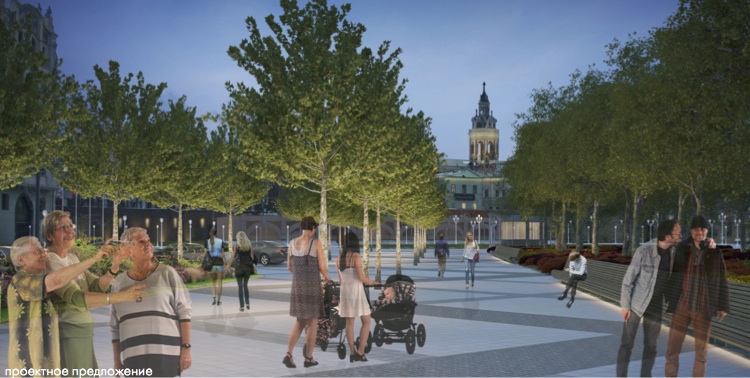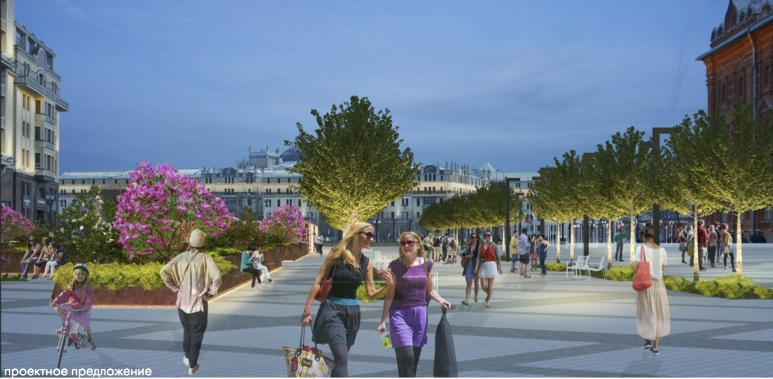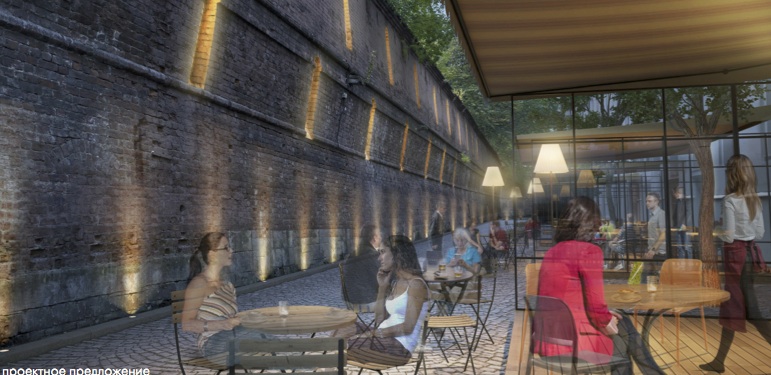Submitted by WA Contents
Revolution Square – a new pedestrian link in Moscow
United Kingdom Architecture News - Jun 21, 2014 - 12:23 11557 views

The Arts Council of the Committee for Architecture and Urban Planning of Moscow endorsed the reorganization concept of Revolution Square in Moscow, developed by WOWHAUS Bureau and commissioned by the Moscow Department for Major Housing Repairs.
The concept of Revolution Square’s redevelopment was first presented at a Council meeting on the development of public spaces on December 9, 2013. In January 2014 the concept was published for public discussion on the website of the Department for Major Housing repairs. Based on the comments received, the project was modified and presented to the Arts Council of the Committee for Architecture and Urban Planning of Moscow, who also made a number of adjustments that were taken into account by the authors in the final version.

The composition of Revolution Square consists of several parts: the main area is the space between the Metropol and Moskva hotels. According to the architects of WOWHAUS, even today it is difficult to call it a square in the full sense, it’s organized so illogically: the existing design closes off historical sites and significant asphalted areas left over from the former road junction that was here is occupied by parking.

The architects propose to create instead a unified and expressive city square pedestrian space, which will form the missing link between Moscow’s central pedestrian and recreational areas. Thus, Revolution Square will connect the areas of Kuznetskiy Most — Dmitrovka, Nikolskaya — Red Square.
.jpg)
Between the Metropol and Moskva hotels WOWHAUS proposed to retain the existing axial arrangement, giving it a compositional ordering supported by new symmetrical avenues of trees and pedestrian axes on both sides of the square. Minimization of driveways, optimization of parking, introduction of a single system of paving, creation of a barrier-free environment, and new landscaping and lighting, according to the project’s authors, will allow this area to be used as part of a full-fledged urban public space.

The compositional center of the entire Revolution Square is the space in front of the entrance to Ploshchad Revolutsii metro station — it is the least built up to retain the existing view of the Kitay-Gorod wall and the panorama of old Moscow. WOWHAUS has placed here a square of lights, organizing the area in front of the metro and giving it a grand look.
The space between the Moskva hotel and the Museum of the War of 1812 (former State Historical Museum) has the historical name of “Resurrection Square.” In the project, an important transit zone for pedestrians coming from Red Square and Manezh Square remains here, and an alley of trees is formed. And in front of Moskva hotel a cozy apple orchard will appear.

An important connection in the city’s pedestrian network will be the opening of Neglinnaya lane for passage between the Metropol hotel and the Kitay-Gorod wall, which is currently used as a utility area of ??the hotel. Here will be a new pedestrian area with sidewalk cafes and small shops, and a fragment of the monument will finally become available to the public.
Two major historical sites of the square — the fountain by architect Vitali and the monument to Karl Marx with the surrounding small gardens which retain old lights, remain untouched in the design. Furthermore, WOWHAUS proposed to honor the memory of the Neglinka river, which still flows under the square: its channel is shown with special paving on the surface.

As noted by Tatiana Guk, Chairman of the Arts Council and Deputy Chairman of the Committee for Architecture and Urban Planning of Moscow, the concept proposed by WOWHAUS was generally approved by the Council. In the course of fine tuning, according to the experts, there are questions regarding the assortment of plants, small architectural forms, and the use of stone pavers when applying pavement. The Arts Council also recommended minimizing the amount of temporary structures in the redevelopment in order to preserve more open space in the square.
Images: WOWHAUS
> via archsovet.msk.ru
